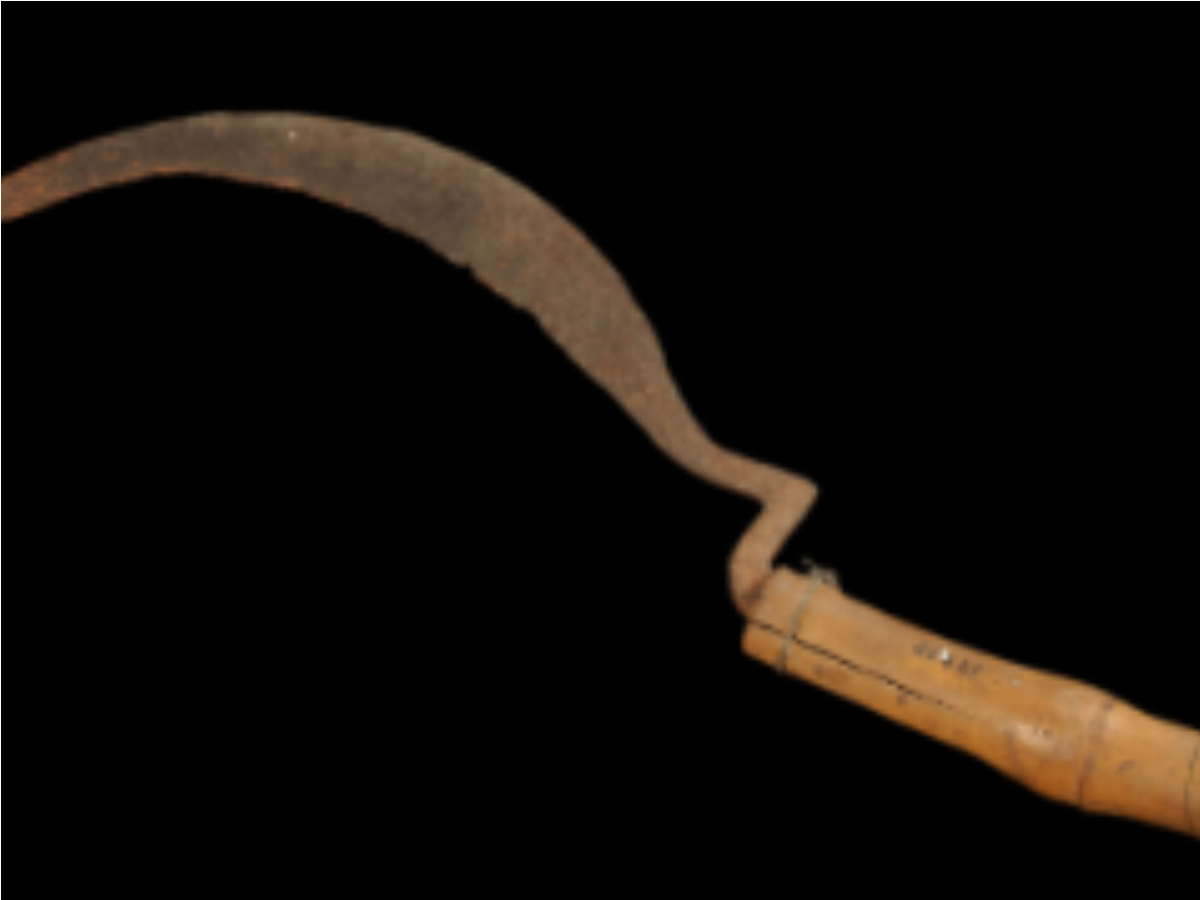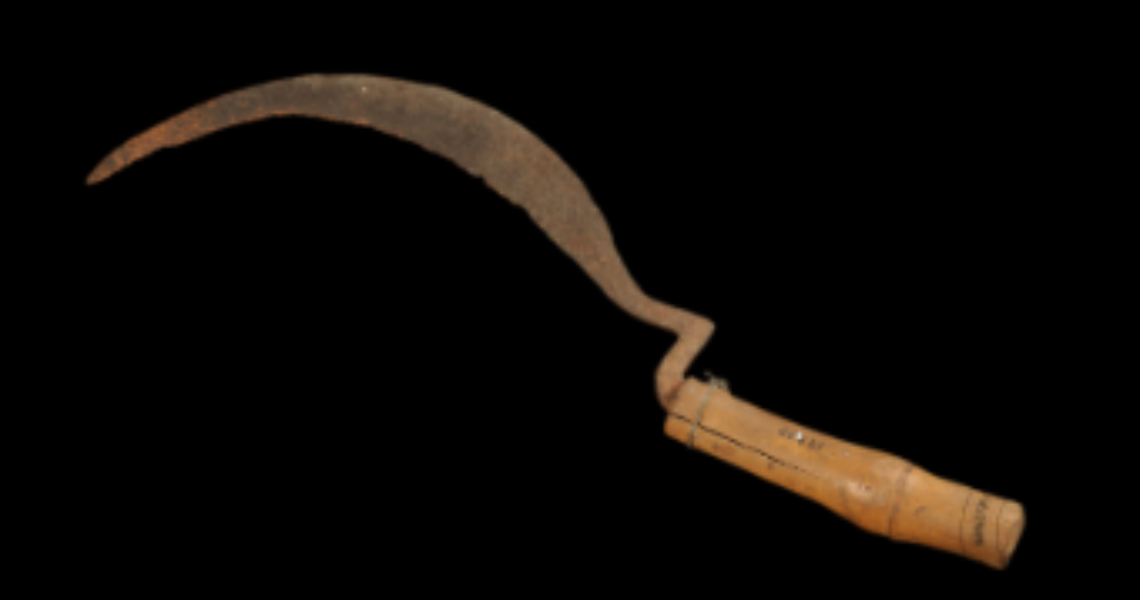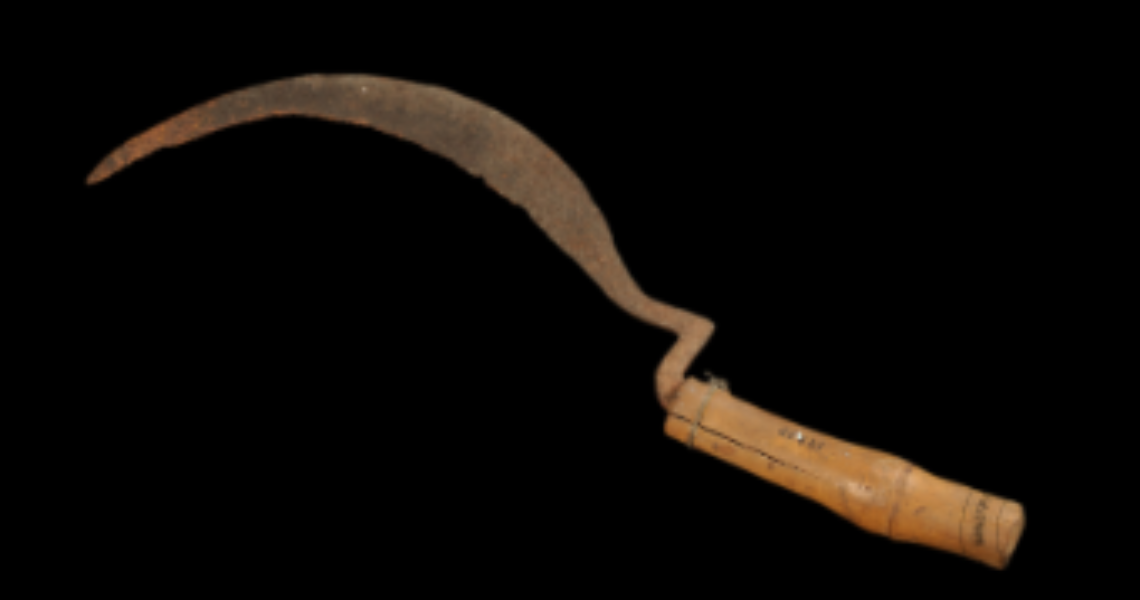State
Tribe Name
Art Type
short description
The Birhor Tribe of Jharkhand, a tribe which is very closely bonded by nature, is subsisting on farming and gathering raw food as their livelihood. Iron sickles, though most important of the tools, are those for cutting grass, harvesting crops, and collecting produce from the forests.
Thumbnail

Filter Postion
Left
Filter Background
Off
Theme
Filter Header Image

content
Image

description
The Birhor Tribe of Jharkhand, a tribe which is very closely bonded by nature, is subsisting on farming and gathering raw food as their livelihood. Iron sickles, though most important of the tools, are those for cutting grass, harvesting crops, and collecting produce from the forests.
This sickle has a curved iron blade, which is serrated in the cutting edge to allow efficient slicing through the tough fibrous plants and stalks. At the lower end, the tang of the blade is bent outward that fits into a bamboo handle giving a very strong grip yet comfortable grip. The grip of the circular base of the bamboo renders it easy to hold and roll with hours of working continuously in the field or forest.
For the Birhor, this sickle means much more for an agricultural implement: it represents sustenance. It acts for them in subsistence farming, where, working small patches of land, they grow and harvest bush crops. Their ingenuity consists of using what they find in their environment: bamboo and iron. Currently, the traditional sickles, as varied as those ones found in museums such as the Indian Museum, Kolkata, are treasure houses of evidence for the craftsmanship and agricultural practice of the Birhor more than just sealing their survival and indigenous knowledge systems.
This sickle has a curved iron blade, which is serrated in the cutting edge to allow efficient slicing through the tough fibrous plants and stalks. At the lower end, the tang of the blade is bent outward that fits into a bamboo handle giving a very strong grip yet comfortable grip. The grip of the circular base of the bamboo renders it easy to hold and roll with hours of working continuously in the field or forest.
For the Birhor, this sickle means much more for an agricultural implement: it represents sustenance. It acts for them in subsistence farming, where, working small patches of land, they grow and harvest bush crops. Their ingenuity consists of using what they find in their environment: bamboo and iron. Currently, the traditional sickles, as varied as those ones found in museums such as the Indian Museum, Kolkata, are treasure houses of evidence for the craftsmanship and agricultural practice of the Birhor more than just sealing their survival and indigenous knowledge systems.
Image Mode
landscape
promoted
On
Verified
Off
